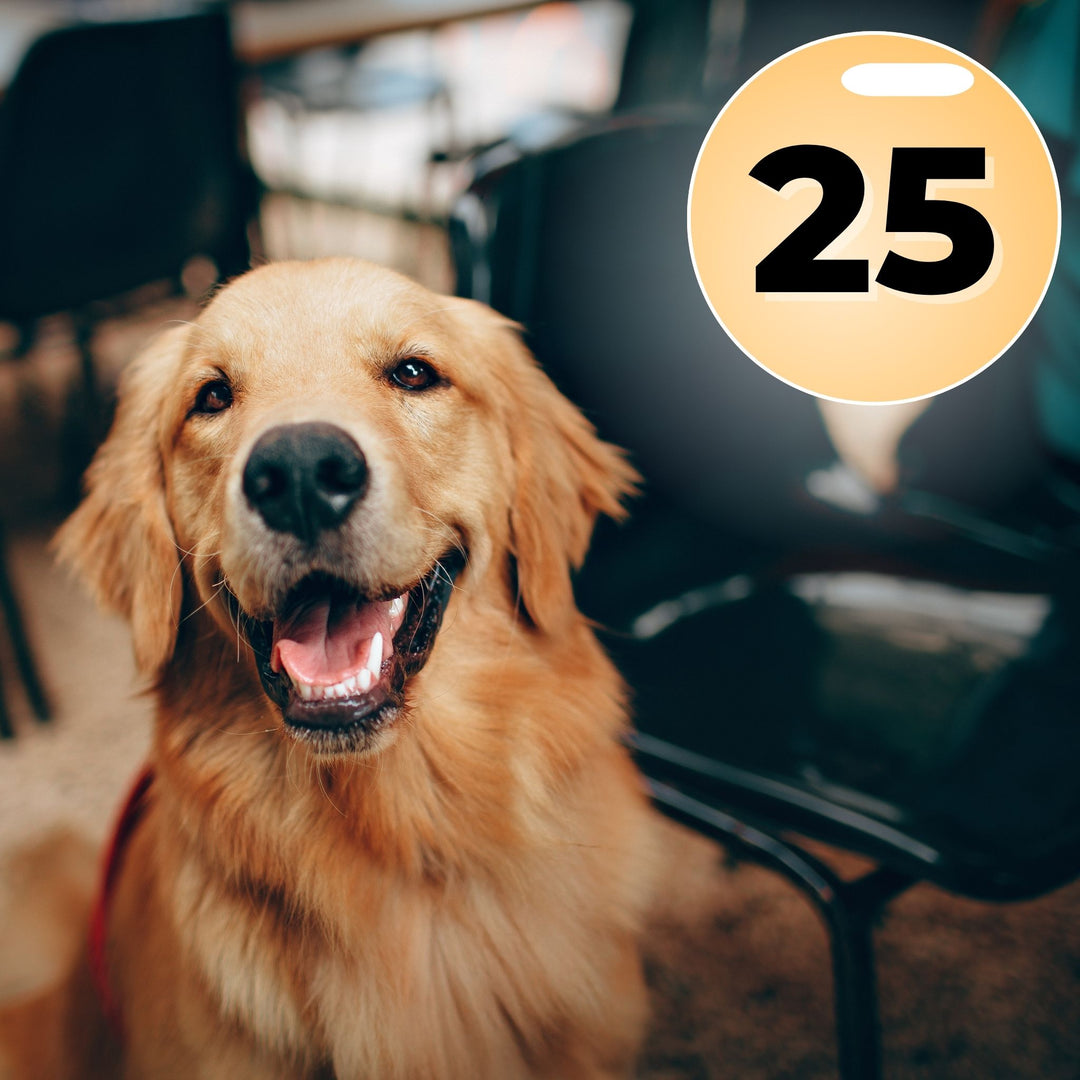Why I Don't Offer Virtual Behavior Modification Training

My bread and butter for a good portion of my professional dog training career was working with fearful, reactive and aggressive dogs. This included offering reactive dog and Control Unleashed group training classes, private lessons and working with behavior unit dogs at shelters. So, why aren't I offering those same services through my online dog training businesses? Simply put: it's not safe.
Behavior modification training is as much an art form as it is something based on science. You need to see what is actually going on to know what it is that you are working to modify, and it is entirely possible that could change and morph over time. A dog may initially present doing one thing only to come to find out that was a symptom of something else entirely. You may successfully tackle one problem to find three more pop up.
All of that to say, in order to put together a solid behavior modification plan, the trainer and/or instructor needs to be there, in-person, with the dog and their owner. Otherwise, there is a risk of a key factor being missed or lost in translation, which can result in a lack of progress or someone getting hurt.
We're Not Speaking the Same Language
What I consider "aggression" is completely different to what many first-time dog owners consider "aggression".
I've received 4 different calls over the years from Golden Retriever and Labrador puppy owners in tears because they had a highly "aggressive" puppy - which is NOT impossible by the way! - only to find that they were some of the loveliest puppies I had ever seen...who were retrieving breeds...in households with young children...who had promoted the puppies tugging on their clothes, leaping up at their hands and so on. If I had gone by the description of the owners, these puppies would have been slated for a dire fate. Instead, we put in place some simple training routines, for puppy and child alike, and all 4 puppies grew up to be loved and cherished family members.
The same applies for fear. I cannot tell you how many times I have gone to an appointment or the very first day of a group training class, even a basic manners one, where the dog is screaming with every body cue in it's arsenal that they are terrified, only to have the owner say, "Oh, they're fine, they always do that." Please don't mistake this for me ragging on the owner, I'm not. They are not a professional dog trainer who is supposed to be able to properly read dog body behavior, I am. But if they do not see their dog is terrified and instead think all is well, how can they possibly relay to me an accurate picture of what is going on? How can I determine what the root cause is if I am looking at the completely wrong picture to begin with?
We need to recognize that dog training professionals and the general dog owning public are speaking two completely different languages even when we're using the same exact words.
Thresholds Are Not a Trifle Thing
When a dog is nearing their threshold, that is cue to you to back-off, unless you want them to explode in someway. However, thresholds are not some definitive thing that you can quantify. Meaning, I cannot tell you, "Work on this exercise in this situation for this amount of time and your dog will be nearing their threshold." That is not how it works. Every dog will have their own threshold and that will be different based on the situation they are in, how much stress-stacking they may have done leading up to that point (meaning not recovered from other potentially stressful OR arousing events), how they are doing physically and medically speaking and so on.
A dog's threshold is nothing to trifle with, ESPECIALLY if you are talking about working with fear, reactivity or aggression.
If you were to push a fearful dog past their threshold, they could shutdown or have a single-event learning episode where they associate anything and everything going on at that moment with their fear. Here's the rub: you may never figure out what associations they made! It could be a smell, a sound, something otherwise innocuous in the environment. By pushing this dog past their threshold, you've potentially signed yourself up for months, if not years, of detective work and slowly unraveling that onion where the final result is far from certain.
All of this is true when a professional is working with someone in-person, when they are there, in the flesh. Now just imagine the potential of a dog owner going past a threshold when they are going by some broad guideline provided virtually...it makes my skin crawl just thinking about it.
Potential for Injury is Real
Remember: every single dog has sharp teeth contained within strong jaws, and every single dog can bite.
This fact alone is enough for me to steer away from working behavior modification cases virtually. I would never forgive myself if I suggested a dog owner do one thing, only to find out they either misunderstood me or I misunderstood what was really going on, and they got bit.
Even if the potential for the dog biting the owner is not a consideration, what about the public? What about other dogs?
If you're working on dog-to-dog reactivity, the likelihood of something escalating to the point where one dog may go after another is too high. Dog fights are not fun, are difficult to break up and again, present a higher likelihood of people getting hurt.
I don't want people to be afraid of their dogs or dogs in general. That is not the point of this. That being said, I do want people to be honest. Especially if you are trying to help a dog who has fear, reactivity or aggression issues, you need to be mindful about safety. In my opinion, that means working with a reputable, knowledgeable and experienced instructor and/or trainer in-person. Virtually working with someone just doesn't cut it, in my opinion.
Do I Miss Working These Cases?
This is a hard question to answer.
Part of me definitely misses helping dogs and their owners develop the skills they need to be more successful in life. Witnessing all of their hard work pay off. Enjoying the fruits of their efforts. Knowing, even when there may be setbacks, the overall journey is what mattered.
Then there is the other part of me that doesn't miss the stress and heartache these cases entailed. I don't miss being in situations with a truly predatory dog who wanted to gut me. I don't miss having my warnings fall on deaf ears when a dog who has already bitten 15 people goes out and bite again. I don't miss going to vet offices with clients to release their dogs from the hell they were living.
Those two parts war with one another fairly regularly, neither one really winning out.
The one thing that keeps me from leaping into offering these services virtually is I don't think I could properly do the dogs or their owners justice. Maybe that is just a lack of skill on my part, but my guess is it would be difficult for anyone to do with 100% reassurance.
What Should You Do If You Have a Fearful, Reactive or Aggressive Dog?
Get help. In-person help. Immediately. As in right now.
Some places you can look include the CCPDT Trainer Directory, APDT Trainer Search, and the KPA Trainer Search. Some of our instructors for FDU, DSU and SWU also offer in-person training and provide behavior modification services. No matter which avenue you choose, don't just latch onto the first person you find. Do your research. Make certain you and your dog gel with them. They will become part of your team and support network.
You can also reach out to your local dog training facility (do your research first) and give them a brief rundown of what you are experiencing and need help with. They may have a trainer and/or instructor on-staff who could help. Stress that you are looking for an in-person evaluation, at your home or at their facility, not a simple 'drop your dog off and it is cured' sort of thing. The latter never works and is questionable at best.
Expect the initial consultation to take anywhere between 1.5-2 hours and these professionals will charge for their time.
They may also refer you to a Veterinary Behaviorist who will partner with them, to determine if any medication may be helpful for your dog. Behavior modification typically takes a village.
There will likely be things that you will have change about your daily routine, whether it be where you bring your dog (dog parks, walking in town, etc.), what your dog has access to (windows, doors, etc.) and so on. These changes may be shocking at first, but they are all designed to help curb your dog's opportunity to practice, and thus perfect, the very same behaviors you are trying to work on.
Unfortunately, it is highly unlikely your journey will be a straight-forward one. You will probably hit some setbacks, some may even be significant. Continue communicating with your vet, your trainer/instructor or veterinary behaviorist. They are there to help you and your dog, but they cannot do that if you do not let know what is going on.
Be kind to yourself and your dog. This will be hard on both of you. Breathe, lean on those professionals who are out there to help you and don't be too hard on yourself or your dog.
While I may not be able to help you directly, I know there are lots of other loving, knowledgeable and caring professionals out there who can. Online dog training works in lots of contexts, but the stakes are simply too high when we are talking about behavior modification for fearful, reactive or aggressive dogs. In those situations, work with a professional in-person.
Author: Dianna L. Santos, KPA-CTP, CPDT-KA, CNWI
Dianna has been training dogs professionally since 2011. She has done everything from teaching group training classes and private lessons, to specializing in working with fearful, reactive and aggressive dogs, to being a trial official and competition organization staff member.
Following a serious neck and back injury, Dianna was forced to retire from in-person dog training. But she was not ready to give up her passion! So, she created Pet Dog U, Dog Sport University and Scent Work University to provide outstanding online dog training to as many dog handlers, owners and trainers possible…regardless of where they live! Dianna is incredibly grateful to the amazingly talented group of instructors who have joined PDU, DSU and SWU and she looks forward to the continued growth of PDU, DSU and SWU and increased learning opportunities all of these online dog training platforms can provide.
In June 2021, Dianna and her business partner, Sean McMurray launched Cyber Scent Work, Inc., an organization that operates in the gray space between training and trialing in Scent Work. With Cyber Scent Work, Inc., handlers have the opportunity to earn Qs, titles and ribbons while also receiving helpful training advice regardless of whether they qualify or not! Be sure to check out Cyber Scent Work, Inc., you will be happy you did!
Join Our Newsletter
Stay up to date with all the happenings at Scent Work University, including the release of new online courses, seminars, webinars, eBooks and receive exclusive promotions and discounts!




